Genre: Fighting Developer: Virgin Interactive Publisher: Acclaim Players: 1-2 Released: 1994
Bruce Lee. The name alone probably already caught your attention. The man was a legend, a cultural icon. He made eastern martial arts popular in the western hemisphere, and his uncanny abilities as both a fighter (he later went on to create his own fighting style) and an actor also as an actor made him famous all over the world. His death at a relatively young age, accompanied by some odd circumstances, contributed to his almost mythical status.
Twenty years after his death, Bruce Lee was still famous (let’s face it, he still is today). Martial arts action movies were at a peak in popularity, with actor/martial artists like Jean Claude Van Damme and Steven Seagal reaching the apex of their popularity. So, it was decided to create a semi-fictionalized biopic based on the life of the greatest martial arts actor of all time. And since it was the early nineties, where the fighting genre had re-ignited a boom in video game arcades, a tie-in game was created as well, tossing the iconic star into the leading role of a versus fighter that found its way to the Atari Jaguar, the Super NES, and the Sega Genesis.
The game follows the course of the movie (which in turn loosely followed events in Bruce Lee’s life). Each fighting stage corresponds to a certain episode in the martial artist’s life, from his early beginnings in Hong Kong and his first job in the United States as a dishwasher, to the (in more than one way) legendary duel whether Lee would be allowed to teach westerners eastern martial arts, and in the end to his (also in more than one way) final movie, Enter the Dragon, with the final battle commencing on its film set. You fight as Bruce Lee, and sadly that’s the only character available to you (unless you use a cheat code). Over the course of the game, the player has three tries to finish the game. Once those are used up, “The Phantom” appears, a demonic and neigh-invulnerable being (lifted directly from the movie) that deals out insane amounts of damage. If he can be defeated, the game continues once more. “The Phantom” is also the game’s insanely difficult final boss.
So, what does this game do to distinguish itself from the sheer onslaught of fighting games that swept the home consoles of the early nineties, aside from a movie license? Well, quite a lot actually. This definitely isn’t a run-of-the mill Street Fighter clone, not only due to the fact that it actually allows three-way multi-player! More on that later.
First, a little word on the game mechanics. Unlike most other games in the same genre (2D fighters in particular), you don’t get such special moves in Dragon. Rather, you own a certain move set that varies depending from your position (near or far from the opponent, crouching or jumping). If you vary your attacks very often, an energy bar (called chi meter) charges. Once a certain charge has been achieved, Bruce Lee can switch to another “fighting stance,” giving him either impressive speed along with new attacks or the ability to use nunchucks (which have a far greater range and deal a decent amount of damage). The chi meter rises very slowly though, and you have to vary your attacks very often in order to even register an increase in the energy bar. It can be charged in between certain stages by completing mini games, though. As useful as it is, you’d better save the energy until the very final battle, since you need a full health bar (and the nunchucks stance) in order to defeat the final boss.
This, coupled with the fact that there are no special moves and a pretty decent AI, forces the player to assume a defensive and more strategic way of playing. Random button mashing or steadily repeating the same attack pattern won’t get you far (unless you’ve managed to access the other fighting stances). This takes some time getting used to, as well as the fact that there are no time limits. A battle is only finished once a combatant has been defeated, except for one battle in story mode that you MUST win within sixty seconds. This means that the individual stages can drag out very long, especially when there’s more than one opponent (at certain stages you’ll have to face two opponents at once).
In order to play the game, you don’t only have to adapt to a different style of playing a fighter, but it also is imperative that you use a six-button controller. Using only three buttons would severely limit the move set of your character. Dragon: The Bruce Lee Story is actually one of the few games that utilizes the Mode button. With it and another button press you can switch between the “fighter” (Y) and the “nunchucks” (Z) fighting stance. Oh, and you also need to push a button for more effective blocking, too. Needless to say, playing this game takes a while getting used to. It should be noted that in a few occasions some hits don’t seem to register even if they appeared to connect, so a little tweak in the collision detection couldn’t have hurt either, but that’s not too much of a problem.
On the other hand, the game rewards the limited character choice and unusual controls by mixing up the fighting formula every once in a while. In two stages you fight two enemies at once, on one occasion there’s a tight time limit, and in one instance you have to fight through several blocks of ice hurled at you in order to reach your opponent. Also, you can take a friend along for the ride. You can play story mode with two players at once, making it a cooperative fighting game. Both have to play as Bruce Lee though. The only way for a second player to take over a different character is to use a cheat code and then play story mode up to the stage where the character of your choice appears. Even then, Player one has to be the Dragon.
Taking the concept of having three fighting characters on screen at the same time leads to its logical conclusion. Aside from story mode there also is a battle mode which allows battles between up to three players at the same time (human or computer controlled). Again, everyone has to fight as Bruce Lee. You would believe that this limited character choice would at least promise some balanced combat. Sadly, this is not the case. To speed things up and allow earlier access to the other fighting stances, every once in a while, a Yin Yang symbol pops up in battle mode, which when collected gives the chi bar a noticeable boost. These appear at random, so the player who gets to pick one up first gets to reach the other stances earlier. Since these are way more powerful than the regular ones, and adding in the fact that the winner of one round keeps his chi meter while the loser loses some of his energy, this mechanic pretty much breaks the balance. Battles can still drag on for a very long time, though. A timer in battle mode would have helped greatly.
On the plus side, the graphics are very nice. Although the Sega Genesis version is graphically less appealing than its Jaguar or Super NES-cousin, it still sports some nice and colorful looks and has some nice detail in some stages. The animation is very fluid and character movements are nice to look at, although they appear to be a bit limited at times when compared to some of its contemporaries. The protagonist himself looks very much like the character he’s based on (by the way, don’t make the mistake to say that this sprite looks like Fei Long from Super Street Fighter II. That’s because both characters are based off the real-life Bruce Lee.)
As for the tunes, they are acceptable. One or two of the tracks have a nice quality to them, making them more memorable. To fit the scenery, most melodies have a distinct Chinese feel to them, and they create quite a fitting atmosphere. Something more action-packed would have been better at times though. Then again, the game moves at a relatively slow pace, so the choice for some quieter, slower tunes is understandable. Most of the stuff isn’t groundbreaking though. It couldn’t have hurt to invest more time in creating the effects though, as the range of connecting punches is very limited and sounds a bit too cartoonish at times, considering the more “realistic” gameplay.
Nevertheless, I have grown to like the game. The keyword here is grown. Owing to its particular style of gameplay, you have to give this one some time. If you’re more used to the fast-paced beat-’em-up style of Street Fighter II or a Mortal Kombat game with their flashy special moves, you probably won’t be too fond of this title. Limited character choice and some kinks that should have been worked out more proper limits the enjoyment as well. On the plus side there is cooperative gameplay and a three-player battle mode… and of course the opportunity to play as the Dragon himself!
Your choice.
SCORE: 7 out of 10

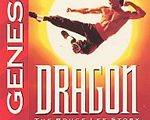
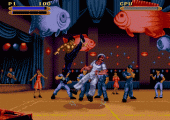
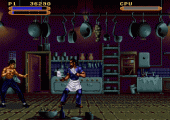
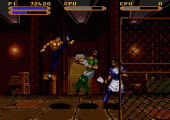
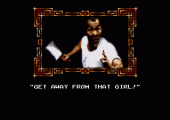
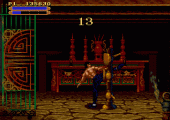
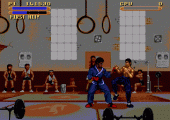
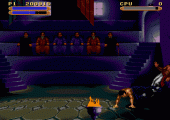
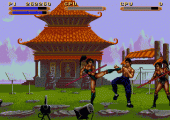
I would agree with this review if it wasn’t for the horrendous hit detection and unresponsive controls. For me this make the game almost unplayable. A shame because it could have been a great fighter. 4/10.
I personally think Dragon is a really underated fighter and one that is very original in its gameplay too.